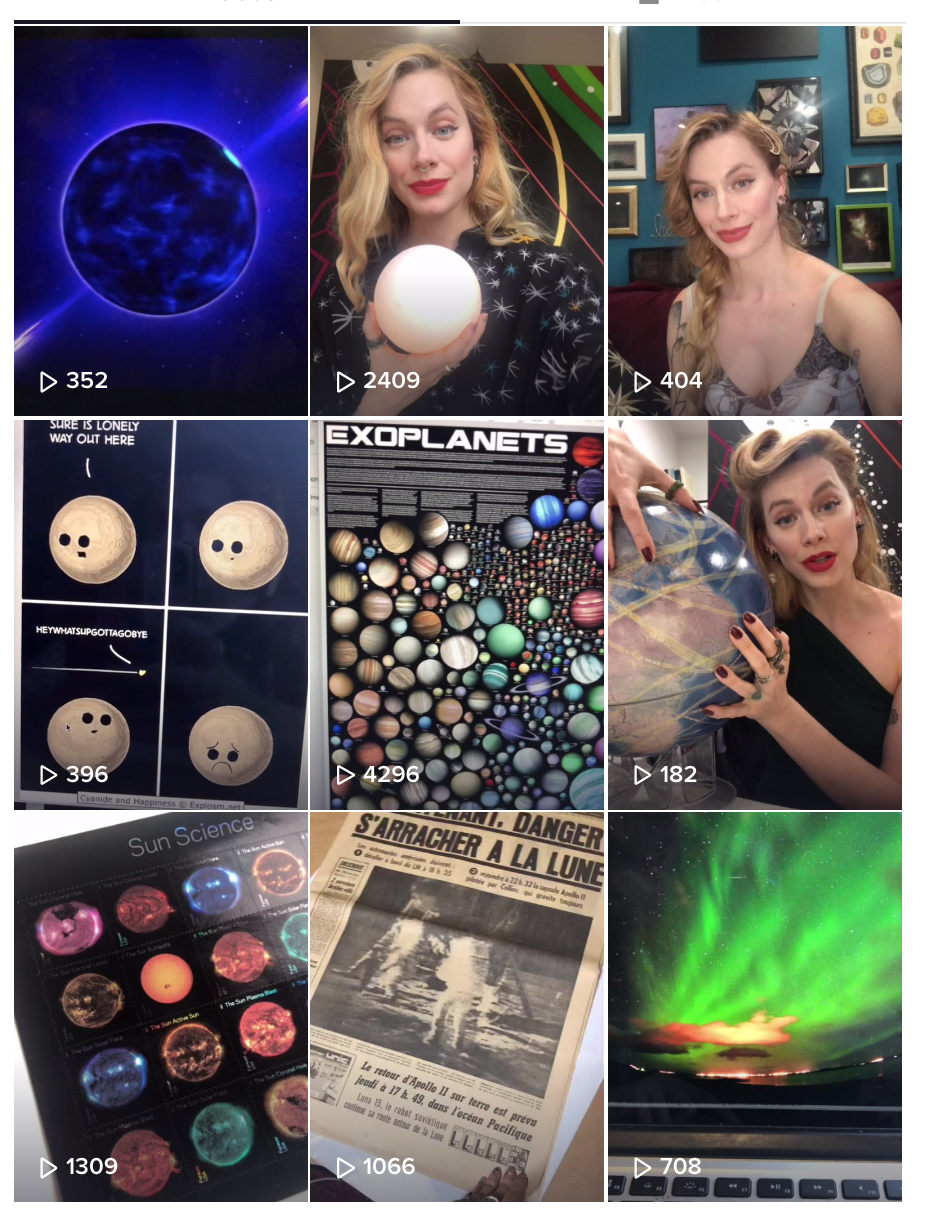Astrophysics Biography
Having been passionate about astronomy, astrophysics and science since childhood, Laura-May attended many conferences in France and the UK for over a decade, before completing online astronomy and astrobiology courses with distinction through the University of Rochester and the University of Edinburgh. She then enrolled in the Paris Observatory (OBSPM),
First obtaining their university diploma (DU ECU), followed by the (DU SU) university diploma in astronomy and astrophysics obtained with highest honours in 2016, for which she produced a 70-page research memoir on Exoplanetary systems. Through this, she was able to do a summer training course at the French OHP observatory—home of the discovery of the first main-sequence exoplanet—which also honed her knowledge of astrophotography through the manipulation of large instruments and advanced software.
After graduating she consulted and wrote astronomy and astrophysics content for a large science app based in Spain. She moved to Los Angeles in 2017 to pursue a career in science communication, founding the Inspired Science Women of Los Angeles group the following year to create a space for women to discuss science and share related events. In 2019 she was selected as one of the winners on honourable mention of the Joan and Arnold Seidel Science writing contest, and subsequently published by the Griffith Observatory’s publication. That same year she was hired by Urban Elective to teach an introduction to astronomy course. She first appeared as guest astrophysics expert on the show Brother in 2018 and 2019, was the writer for astrophysics and climate change-related episodes for Generation Genius in 2020, and was then the lead writer and host for the climate, technology and sustainability show One Step, by publishers Ballard & Tighe. She was invited to give a talk for Caltech astronomy's Astronomy on Tap event in March 2021 before starting a short-format video channel focusing on astrophysics content on YouTube and TikTok under the name CelestialMachines and CelestialMachinesFR for the French version. She consulted on an atmospheric balloon launch in the Californian desert as part of a marketing campaign in spring 2021, and helped get a basketball to reach the stratosphere. In 2022 she began working at Griffith Observatory as a public astronomer/guide, frequently giving the daily Local Noon talk and explaining celestial mechanics, pendulum physics, solar physics and more. She is also a presenter and host for the Griffith Foundation's School program and is regularly invited to participate in special events.
She also uses artwork to explore astrophysical and cosmological concepts, was invited to show her work at New Scientist Live in 2017 and has been invited to New York Creative Agency Yummy Colour’s Concept of the Year for three years in a row. She produced a large painting inspired by spectroscopy in 2020; returning in 2021 with a work on atmospheric phenomena and astrometry, and in 2023 created her largest work yet, focused on Galactic collisions. Her 3D Cosmic Entomology series uses mosaic, entomology and telescope images to explore theories like Supersymmetry or the Big Rip. It has been selected and featured by the Hubble Space Telescope as part of their 30th anniversary celebrations. Her creative ventures were featured by NASA in October 2022.
First obtaining their university diploma (DU ECU), followed by the (DU SU) university diploma in astronomy and astrophysics obtained with highest honours in 2016, for which she produced a 70-page research memoir on Exoplanetary systems. Through this, she was able to do a summer training course at the French OHP observatory—home of the discovery of the first main-sequence exoplanet—which also honed her knowledge of astrophotography through the manipulation of large instruments and advanced software.
After graduating she consulted and wrote astronomy and astrophysics content for a large science app based in Spain. She moved to Los Angeles in 2017 to pursue a career in science communication, founding the Inspired Science Women of Los Angeles group the following year to create a space for women to discuss science and share related events. In 2019 she was selected as one of the winners on honourable mention of the Joan and Arnold Seidel Science writing contest, and subsequently published by the Griffith Observatory’s publication. That same year she was hired by Urban Elective to teach an introduction to astronomy course. She first appeared as guest astrophysics expert on the show Brother in 2018 and 2019, was the writer for astrophysics and climate change-related episodes for Generation Genius in 2020, and was then the lead writer and host for the climate, technology and sustainability show One Step, by publishers Ballard & Tighe. She was invited to give a talk for Caltech astronomy's Astronomy on Tap event in March 2021 before starting a short-format video channel focusing on astrophysics content on YouTube and TikTok under the name CelestialMachines and CelestialMachinesFR for the French version. She consulted on an atmospheric balloon launch in the Californian desert as part of a marketing campaign in spring 2021, and helped get a basketball to reach the stratosphere. In 2022 she began working at Griffith Observatory as a public astronomer/guide, frequently giving the daily Local Noon talk and explaining celestial mechanics, pendulum physics, solar physics and more. She is also a presenter and host for the Griffith Foundation's School program and is regularly invited to participate in special events.
She also uses artwork to explore astrophysical and cosmological concepts, was invited to show her work at New Scientist Live in 2017 and has been invited to New York Creative Agency Yummy Colour’s Concept of the Year for three years in a row. She produced a large painting inspired by spectroscopy in 2020; returning in 2021 with a work on atmospheric phenomena and astrometry, and in 2023 created her largest work yet, focused on Galactic collisions. Her 3D Cosmic Entomology series uses mosaic, entomology and telescope images to explore theories like Supersymmetry or the Big Rip. It has been selected and featured by the Hubble Space Telescope as part of their 30th anniversary celebrations. Her creative ventures were featured by NASA in October 2022.

